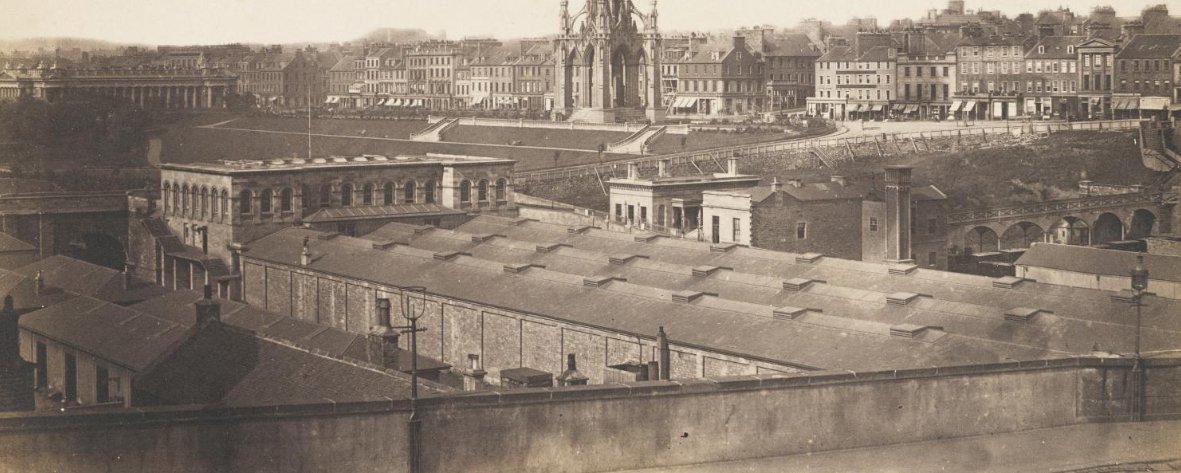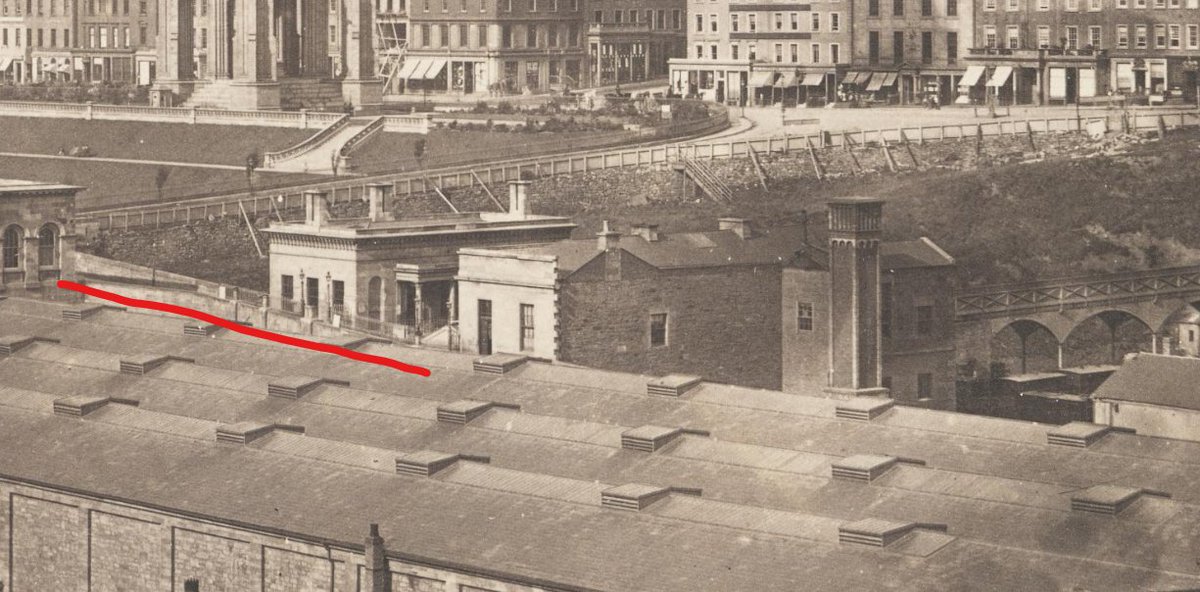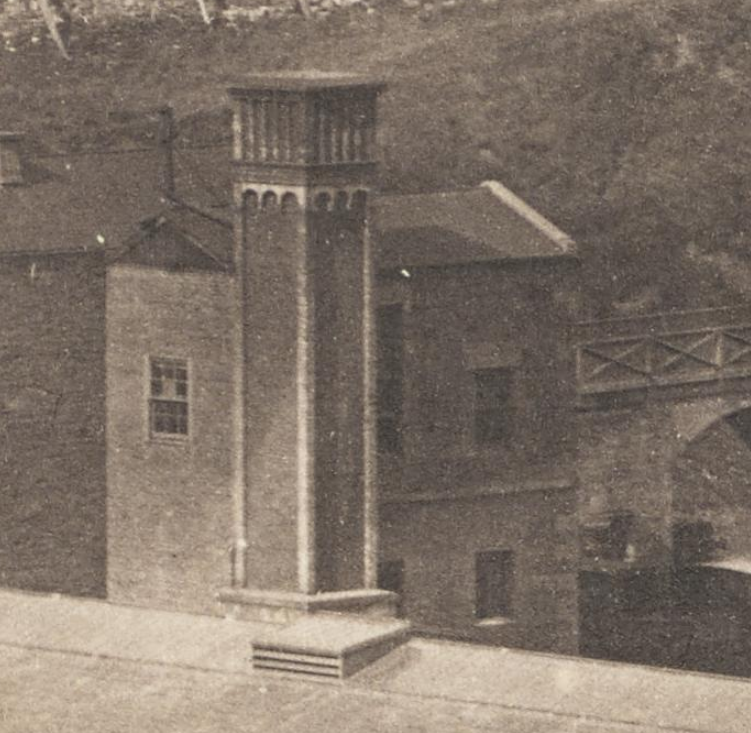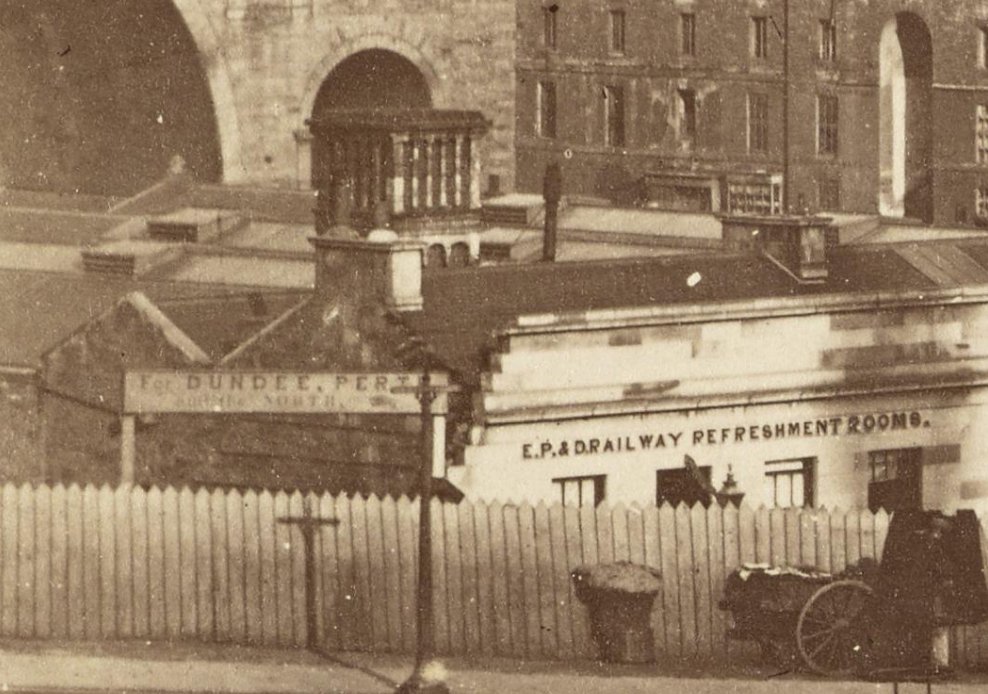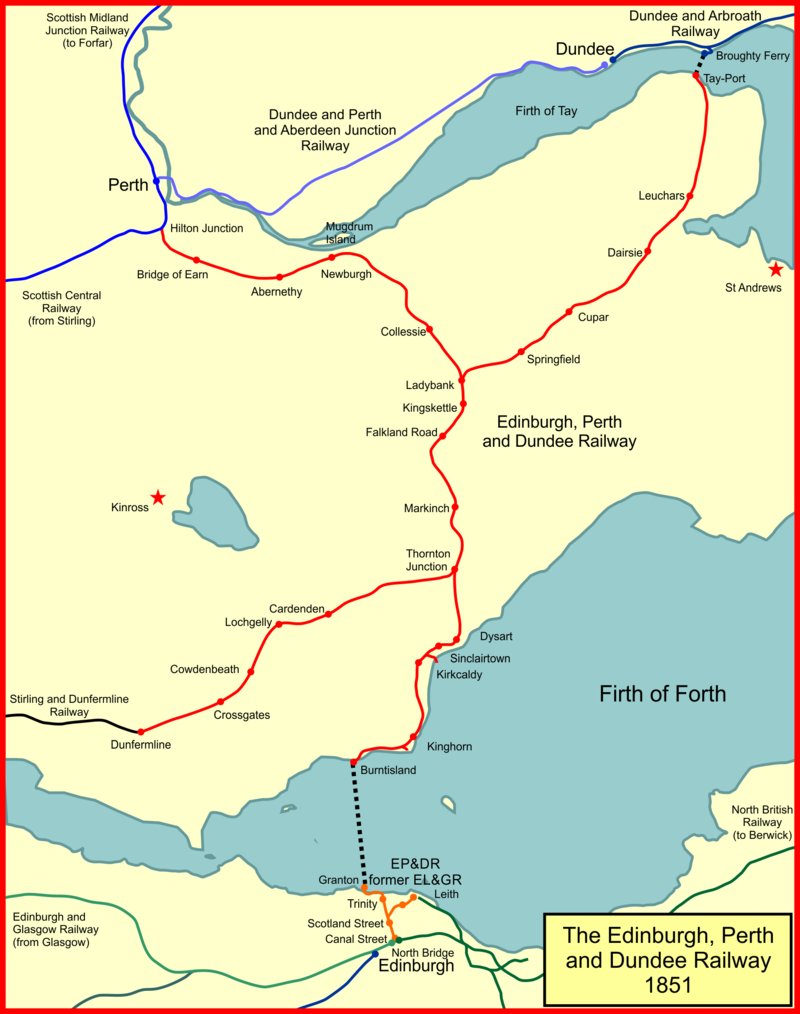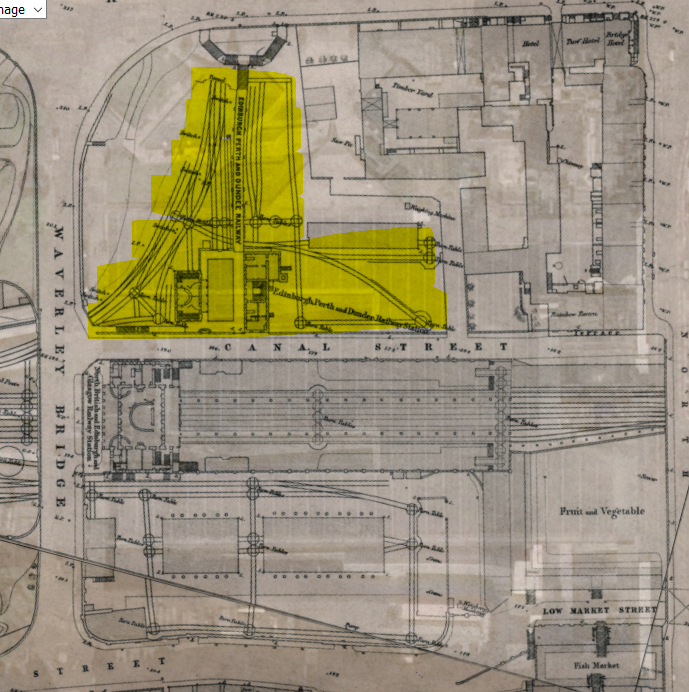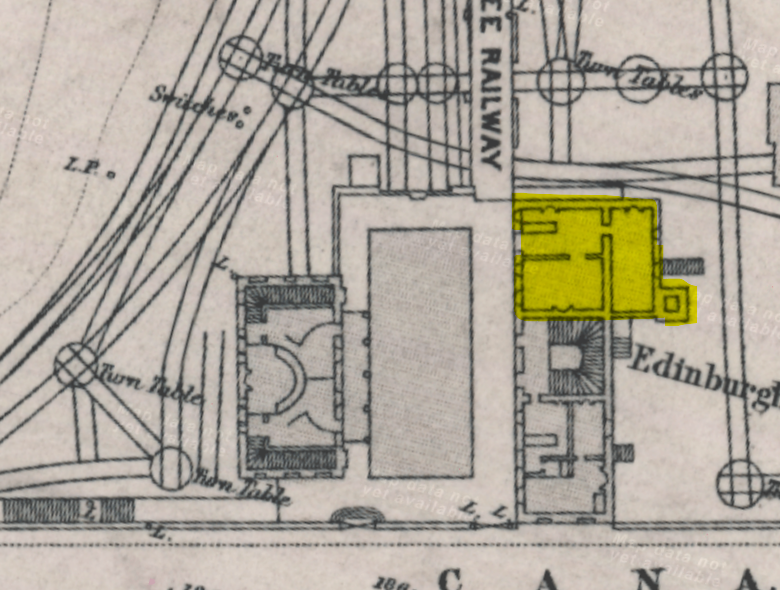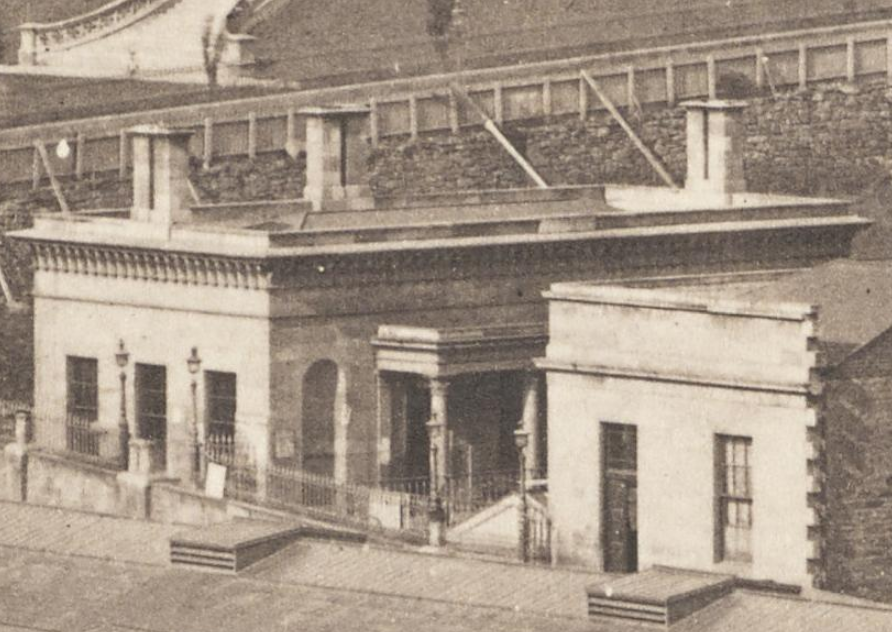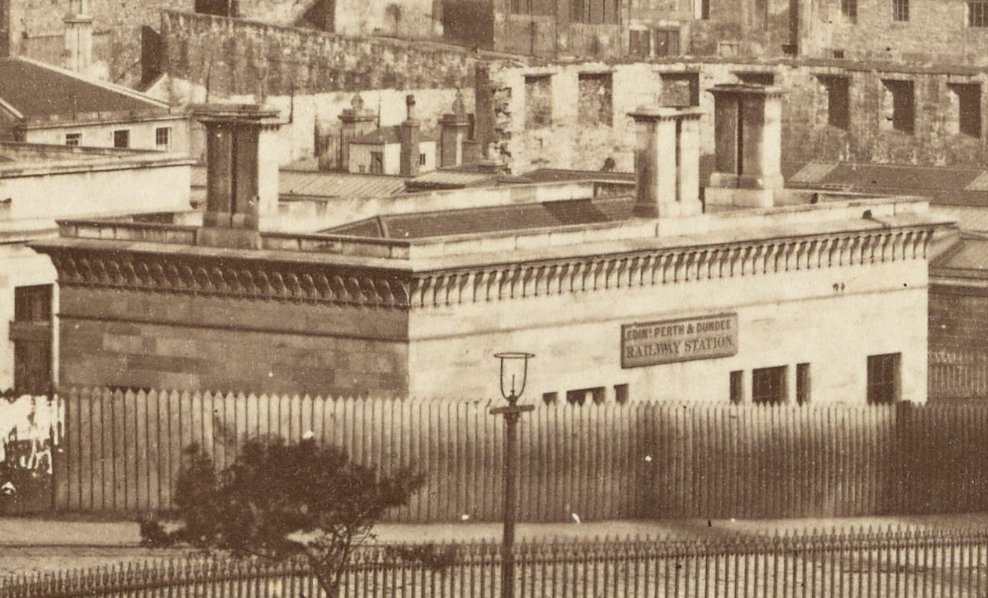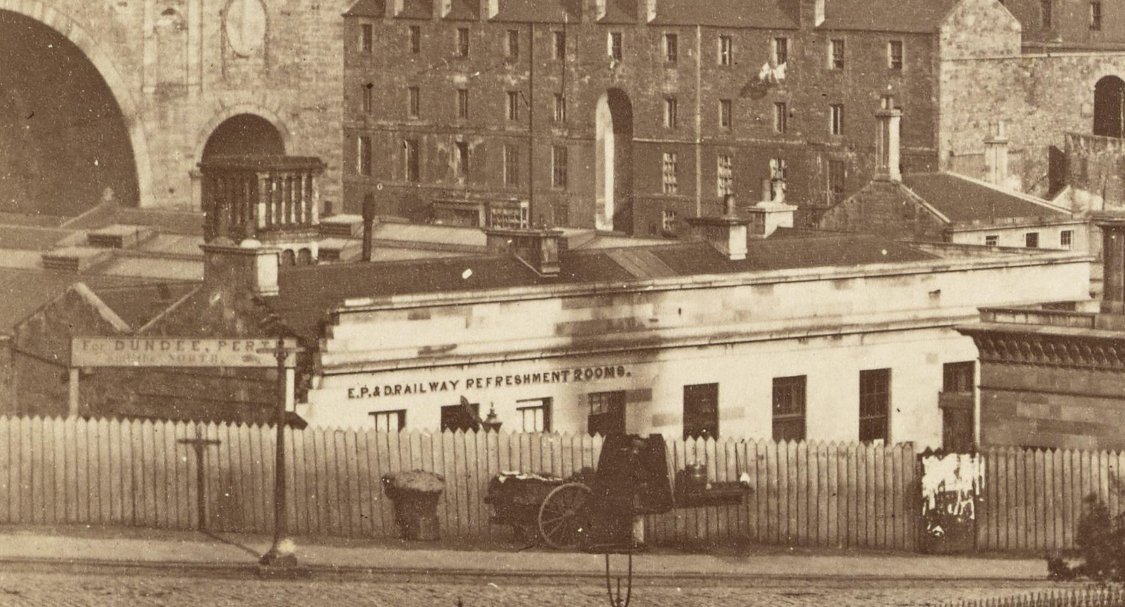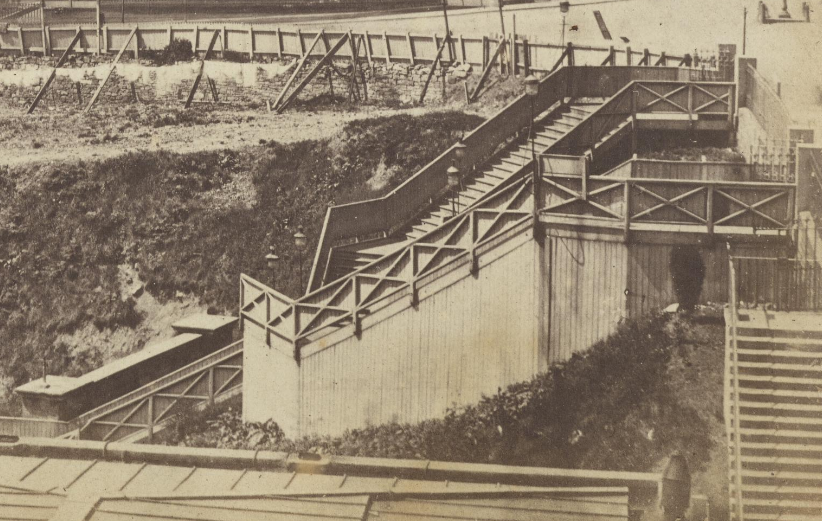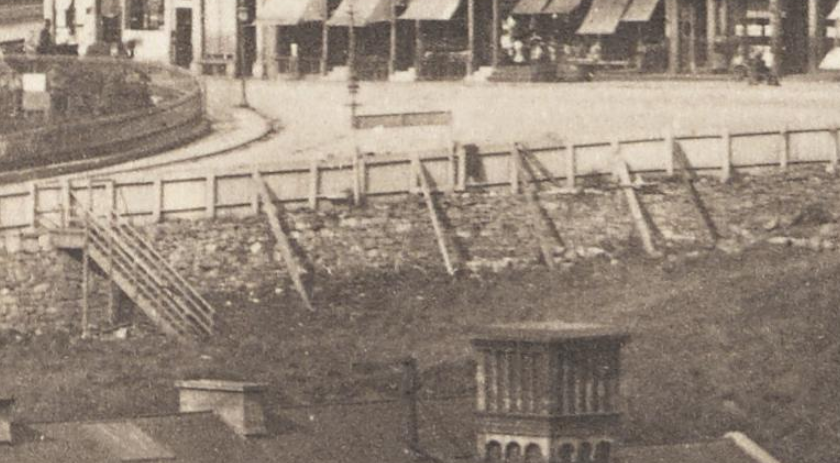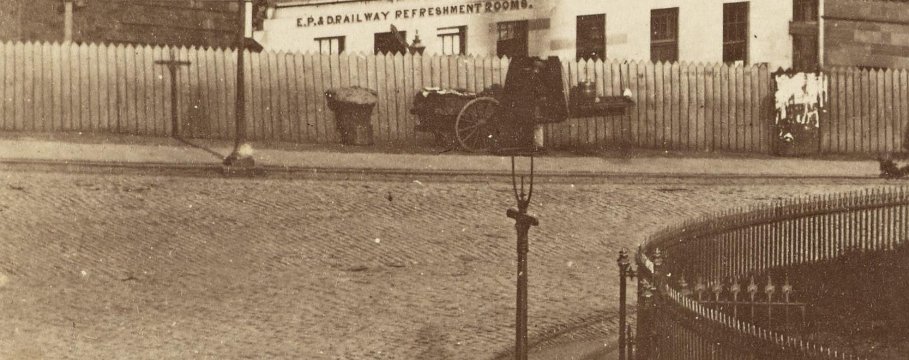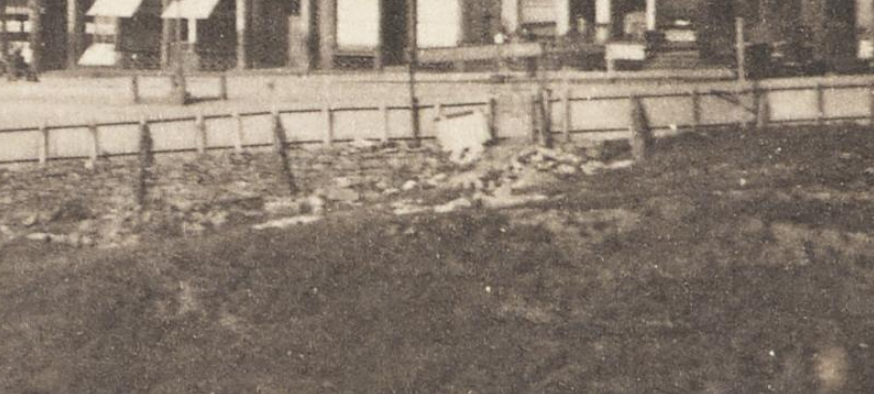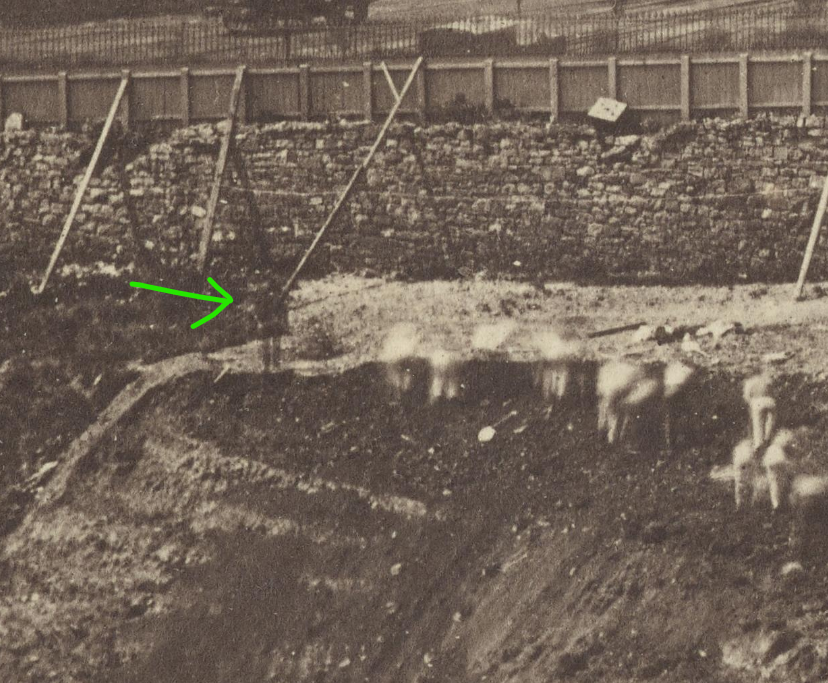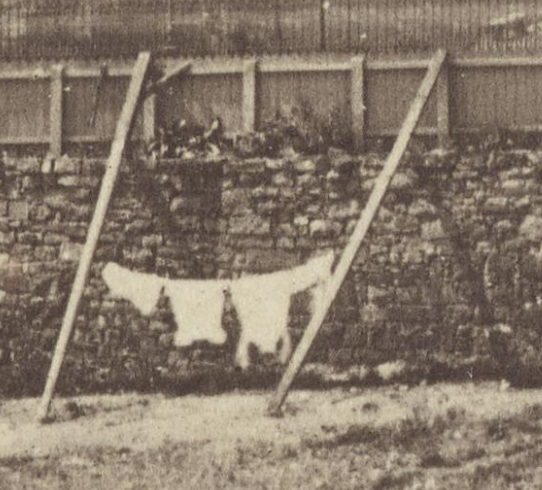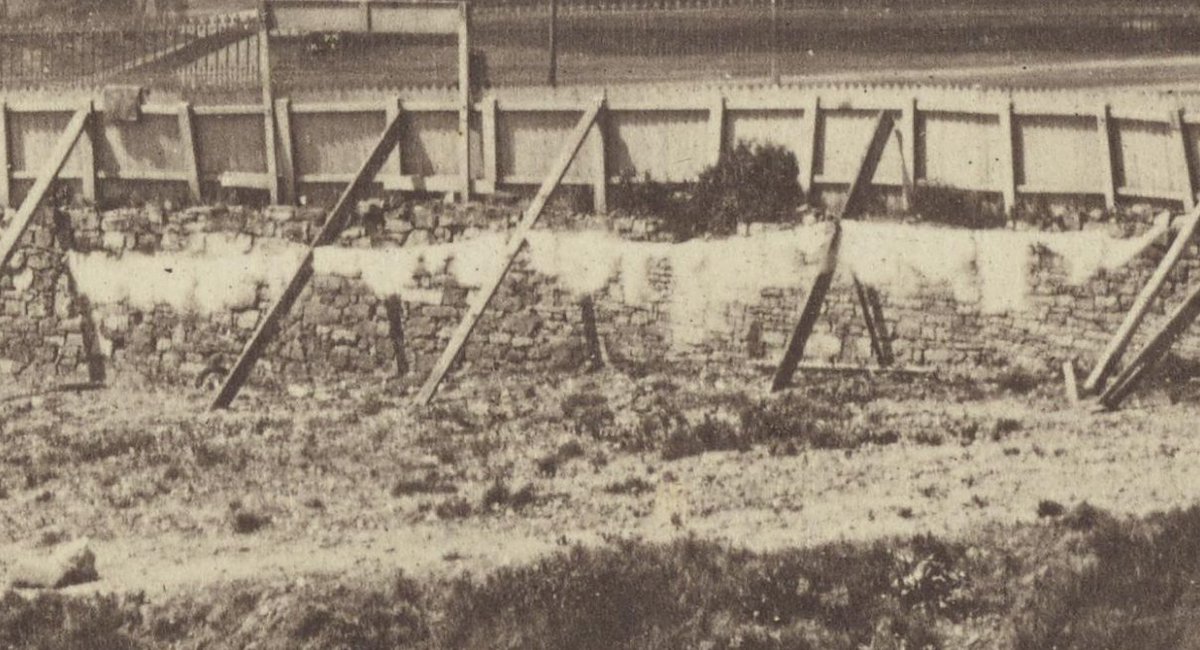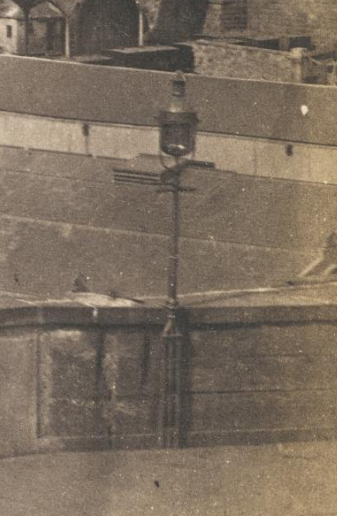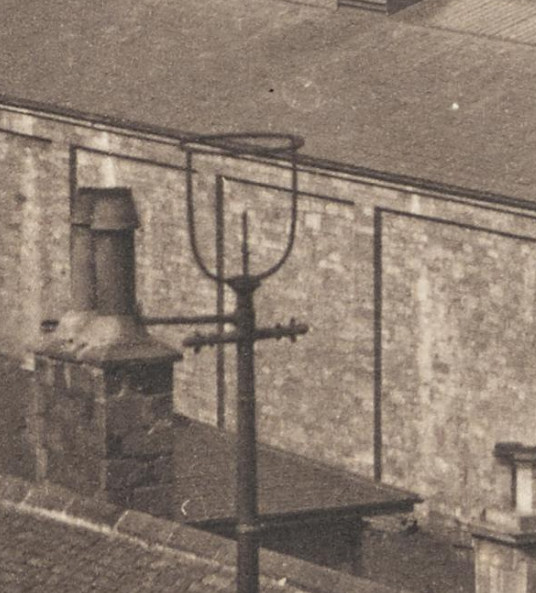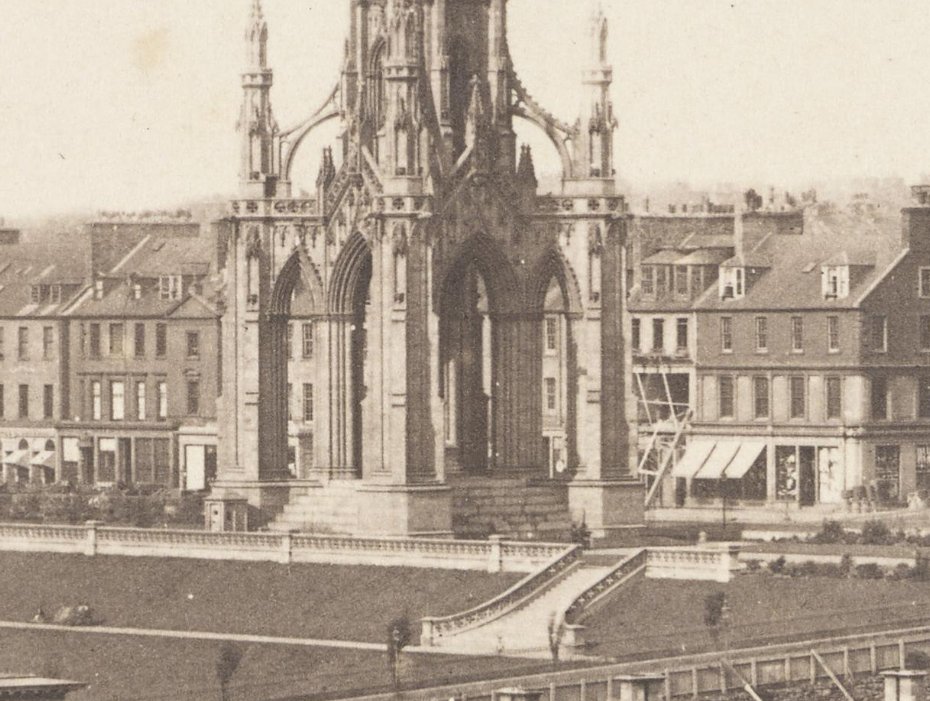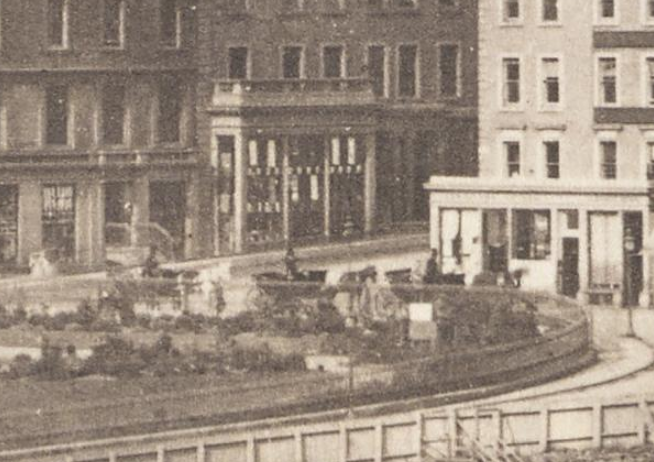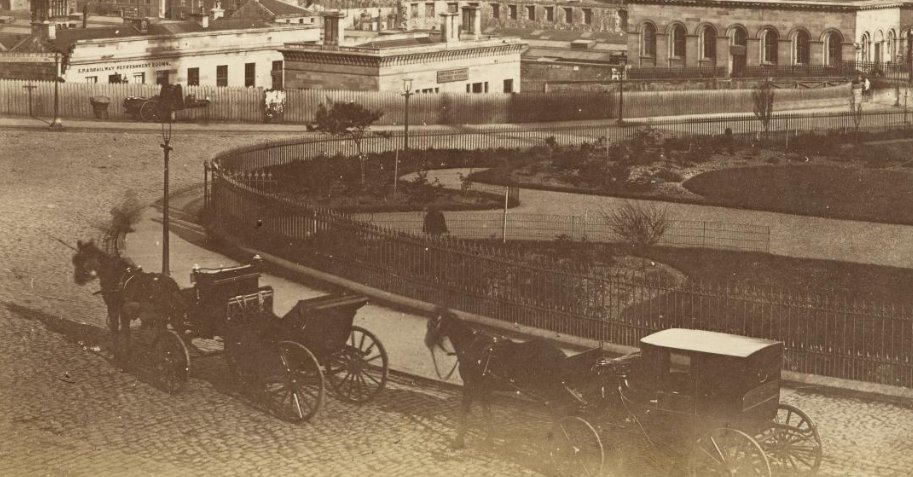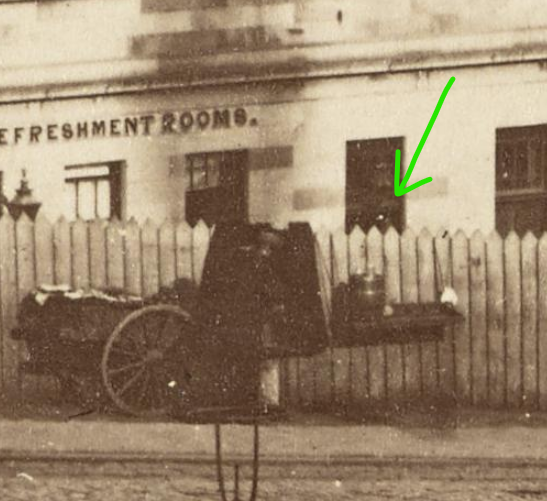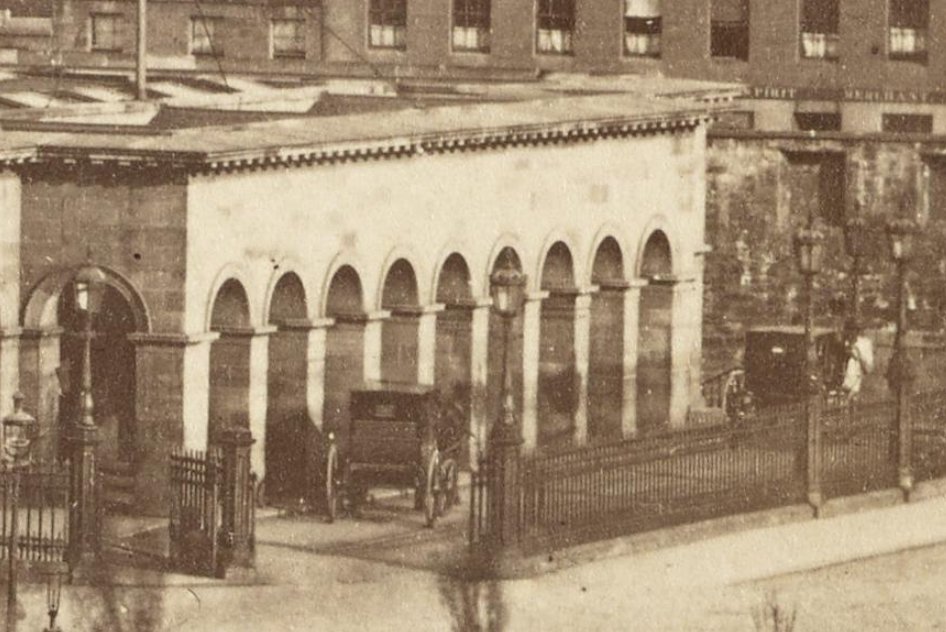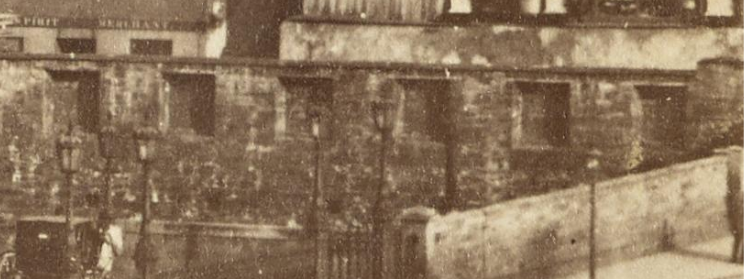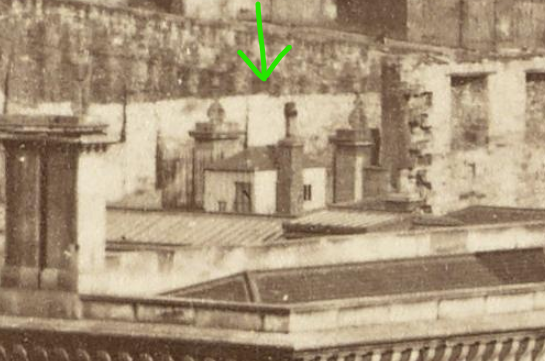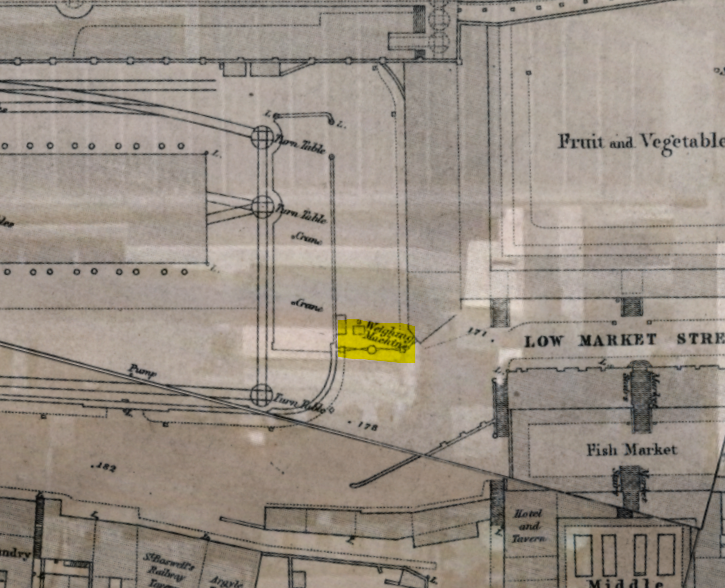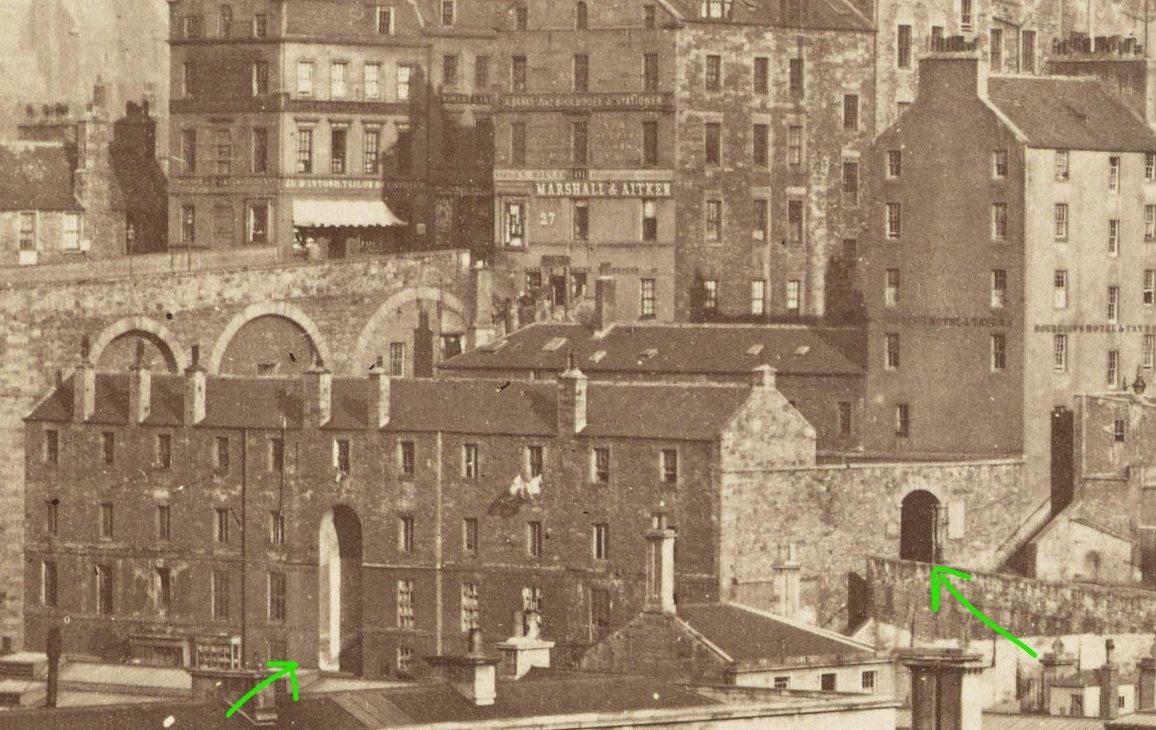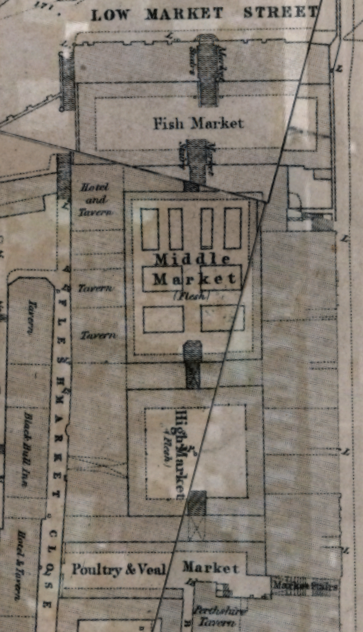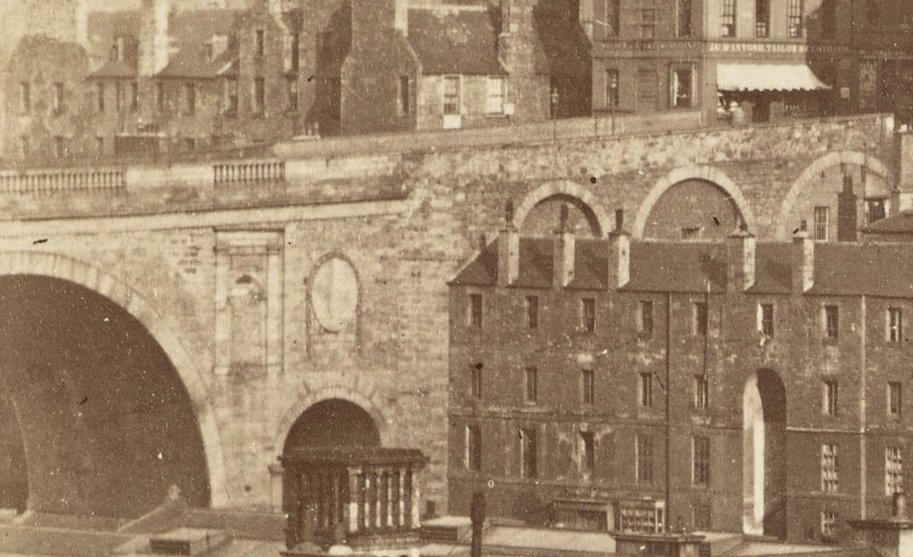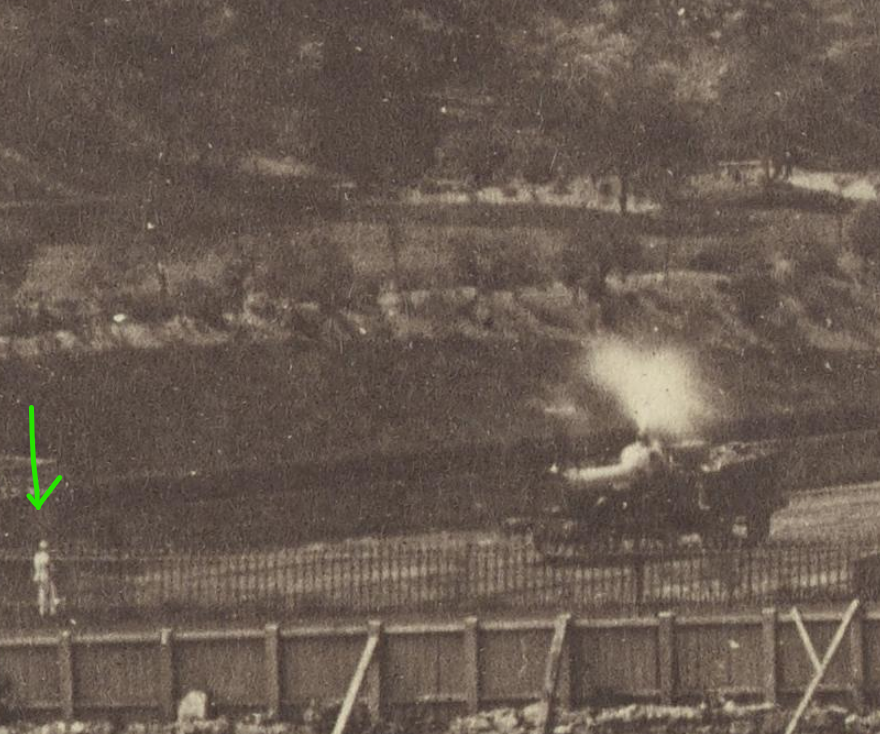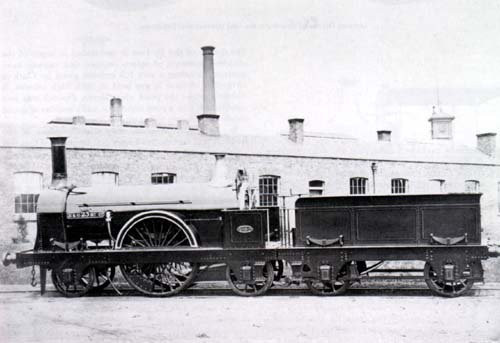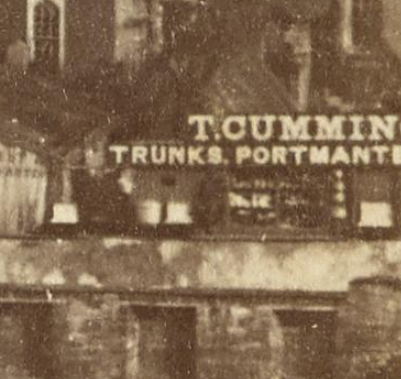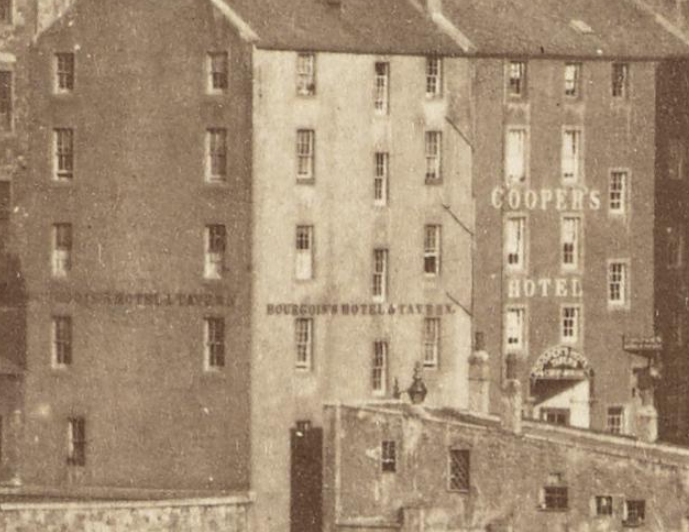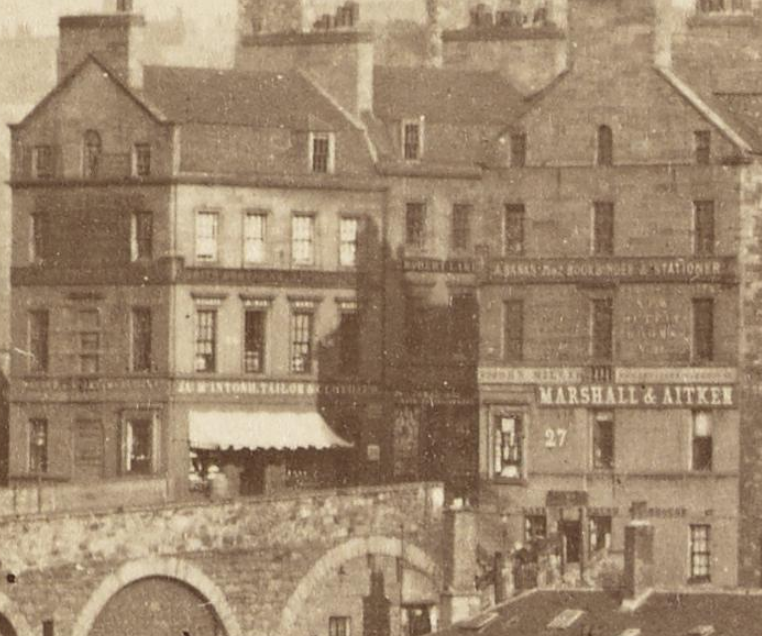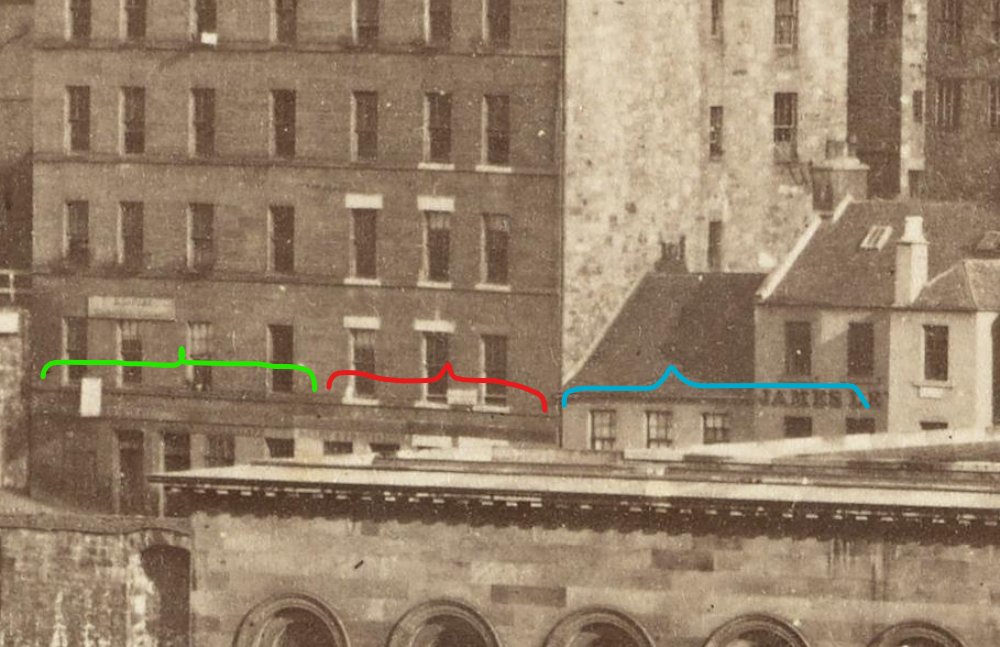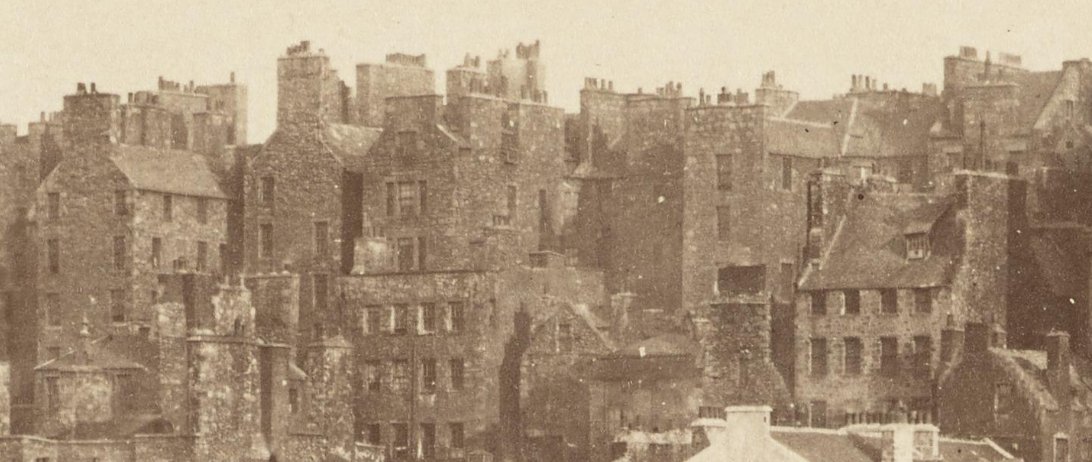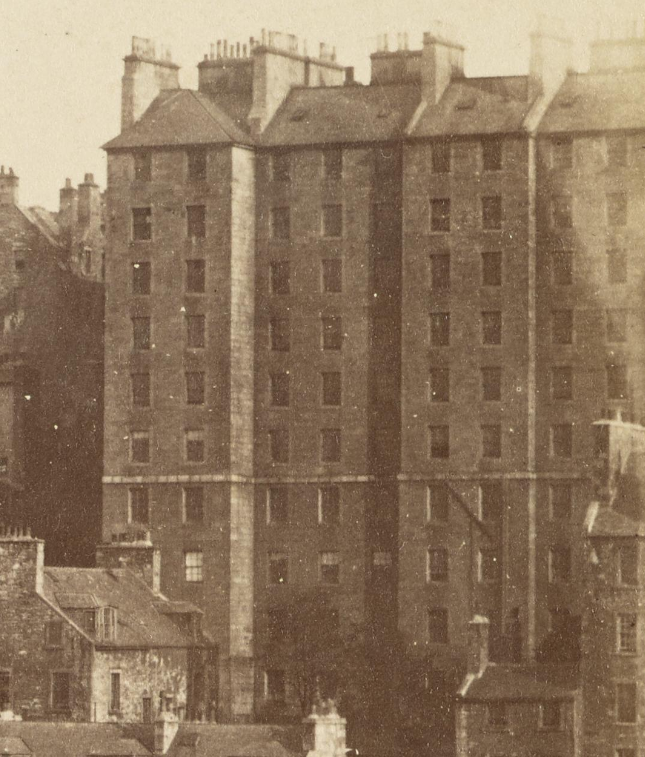I have been staring at some rather marvellous late 1850s/early 1860s photos on the National Galleries website that show the Canal Street railway station which served the Scotland Street tunnel. ( https://www.nationalgalleries.org/art-and-artists/120405/view-north-bridge-towards-princes-street-waverley-station-foreground-sir-walter-scott-monument) They are uncredited, but similar to work of Archibald Burns
As always, the phenomenal detail that these photographers could get out of totally primitive and temperamental equipment, often inventing the art/science/dark art of photography as they went, is quite startling. So let's have a wee zoom in.
On the left is the "General" station serving the Edinburgh & Glasgow Railway, to its right is the "North Bridge" station that served the North British. These formed a through route and are on the alignment of what later became Waverley. That station hall is now the Wetherspoons
But there's a 3rd station, at 90° to the other 2, called "Canal Street" or "Princes Street". The former street is the red line, effectively on a line with the current northern ramp into the station. It served the Edinburgh, Leith & Granton Railway via the Scotland Street Tunnel
The tunnel is under the red arrow, there is a footbridge across to the booking hall/ waiting rooms from steps accessing Princes Street, and under the green arrow is the distinctive tall building and ornate chimney of the winding house, which hauled trains up the tunnel on a rope
We see that squat chimney in a later photo ( https://www.nationalgalleries.org/art-and-artists/120403/old-town-seen-princes-street-waverley-bridge-carriages-and-horses-foreground-edinburgh-scotland?search=waverley&search_set_offset=4) taken from Princes Street, by which time the railway was part of the Edinburgh, Perth & Dundee. The Edinburgh side was an island, connected to the main network across the water by the Granton train ferries.
The 1849 town plan (NLS - https://maps.nls.uk/geo/explore/#zoom=18&lat=55.95213&lon=-3.19050&layers=71&b=1) shows us the Canal Street station perpendicular to the E&G/NBR mainline, who effectively operated a single coherent - but terribly crowded - station. There was an awkward curve connecting the 2 stations from the west side.
I have highlighted the winding house in yellow. Note the beautiful internal detail of these early town plans. Note also how the crazy network of lines was served by a myriad of small turntables, which would soon prove to be a totally impractical way to run a railway station
These are certainly by far and away the best photos I have clapped eyes on of the rather enigmatic Canal Street station. You can see the eastern and northern gables left half finished as if further expansion was planned (third photo; https://www.nationalgalleries.org/art-and-artists/29863/view-across-above-waverley-station-castle)
That rather slender picket fence, help up by a prayer and some rather ineffective looking bracing, is all that separates you from a pretty severe fall down the precarious embankment down to the Scotland Street line
Obviously it was a concern, as in the 3rd photo, there's a gang of light-clothed navvies hard at work with picks and shovels working on the embankment. Note how roughly formed the retaining wall of Waverley Bridge is, and the ghostly dark figure of the supervising foreman.
What I love about this is the workers have brought their laundry to dry. It seems so odd that men labouring in filth all day long would dress in light coloured clothing, but there you go!
The gas lamps of North Bridge, the first such lamps in Edinburgh, introduced 1819. The cross-piece is for the leerie's (lamp lighter's) ladder. The gas spigot comes straight up through the standard. The first lamp has its glass bowl and chimney, the other is missing.
The Scott Monument, looking clean and crisp only 10-15 years old. It is yet to be joined by the statues of Adam Black and David Livingstone on either side. Note that little wooden entry booth (or its descendent) is still there and also the shopfront being rebuilt behind.
This is before the advent of horse trams, they didn't come until about 10 years later, and the only sign of road transportation around are some horse cabs, ranked for hire (or perhaps waiting for their owners) on Princes Street.
There are few people around, judging by the shadows it is the mid-afternoon so perhaps a Sunday? A single street seleer with a cart is present, they've set up a little booth, with a table hung from the picket fence with a brass-hooped barrel of some sort. Selling drinks?
Outside the NBR/E&G station a few cabs wait to pick up passengers. Same as it ever was... Although it was probably permitted back then.
On the alignment of Market Street are the ruinous walls of the old Green Market and Shambles that used to occupy the space below the North Bridge, repurposed as retaining walls for the railway station.
To the south of the stations is an entrance onto Market Street, the wooden cabin of a weighbridge and 2 ornamental stone pillars are obvious
On Low Market Street is a handsome tenement with a gaping close in the middle; it was the Fish Market, the close housed "Market Steps" and gave access to the tiered buildings of the city's main produce markets running up towards the High Street
The old North Bridge is an odd one. A mix of ornate detail and craftsmanship and much more workaday masonry (which was probably always intended to be built over so not finished to a high quality.) It's elegant, kind of, but also ungainly.
And again in white, a lad (judging by his scale) watches a small steam locomotive with a "haystack" boiler venting steam as it runs into the E&G General Station. Possibly an early 2-4-0, a type the E&G were fond of.
Correction, it was 0-4-2s that they were fond of early on, the 2-4-0s came after 1859 and didn't have the haystack boilers.
I believe photos of original Edinburgh & Glasgow Railway locos are thin on the ground, but here's a drawing of an ~1859 2-4-0 built by Beyer, Peacock in Manchester. A few years later the expansionist North British railway took over and repainted them in their olive & brown
And here is a 2-2-2 by the same builder from 1856. These engines would serve the North British Railway until as late as 1912. (Pic - Beyer, Peacock site http://www.beyerpeacock.co.uk/Railways%20of%20dis/Edinburgh%20%26%20Glasgow/Edinburgh%20%26%20Glasgow%20Railway.html)
There is a picture of that first locomotive here ( https://transportsofdelight.smugmug.com/RAILWAYS/LOCOMOTIVES-OF-LNER-CONSTITUENT-COMPANIES/LOCOMOTIVES-OF-THE-NORTH-BRITISH-RAILWAY/i-cfsKsvQ/A) rebuilt by the NBR into a more modern guise, with a half cab and improved boiler and firebox and Westinghouse air brakes (the arrangement of cylinders and pipes on the side of the boiler)
Plug for my own video from deeper back in lockdown - take a virtual ride from Canal Street to Granton... (it's actually not that great quality wise as I was just starting out trying this at the time - but you get the idea.)
One of the things about these old photos is just how crisp the detail is - we can easily see what sort of shops and businesses were around, helped out by all those over-sized signs that proprietors used to paint on their premises.
T. CUMMINS.
TRUNKS, PORTMANTEAUX...
T. CUMMINS.
TRUNKS, PORTMANTEAUX...
Left to Right
The Argyle Tavern (green)
St. Boswell's Railway Tavern (red)
James Le(slie?) North British Tavern
The Argyle Tavern (green)
St. Boswell's Railway Tavern (red)
James Le(slie?) North British Tavern
And just look how rambling, ramshackle and old the Old Toun really was back then! These buildings 1 or 2 hundred years old (or more), even then, built on the remains of even older buildings.

 Read on Twitter
Read on Twitter
